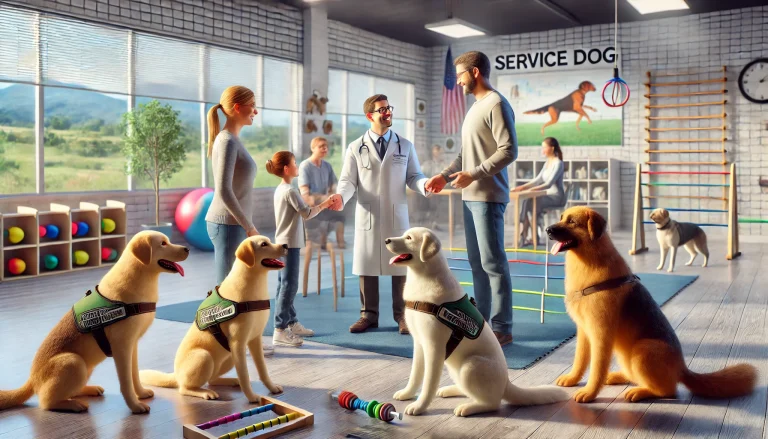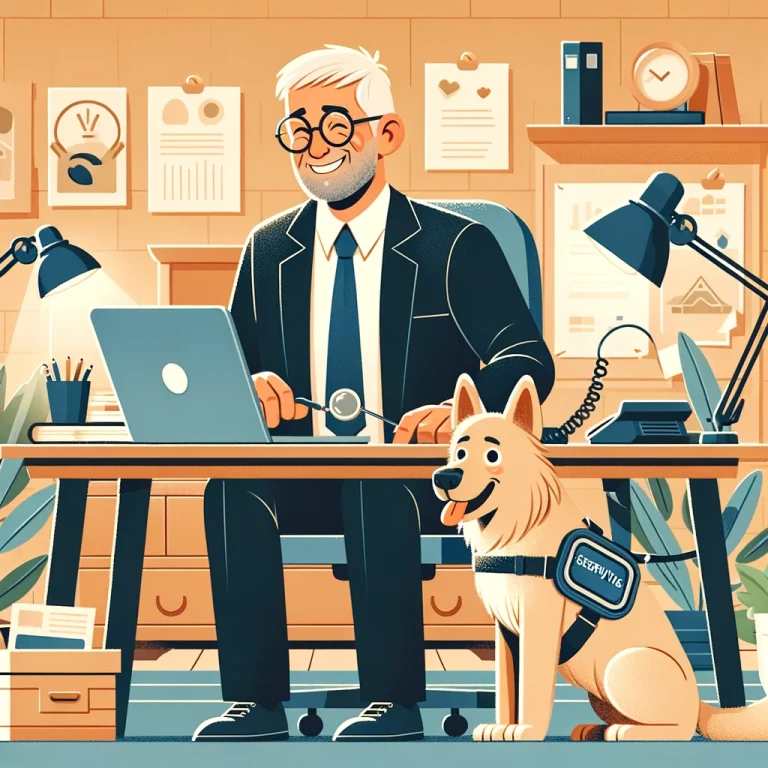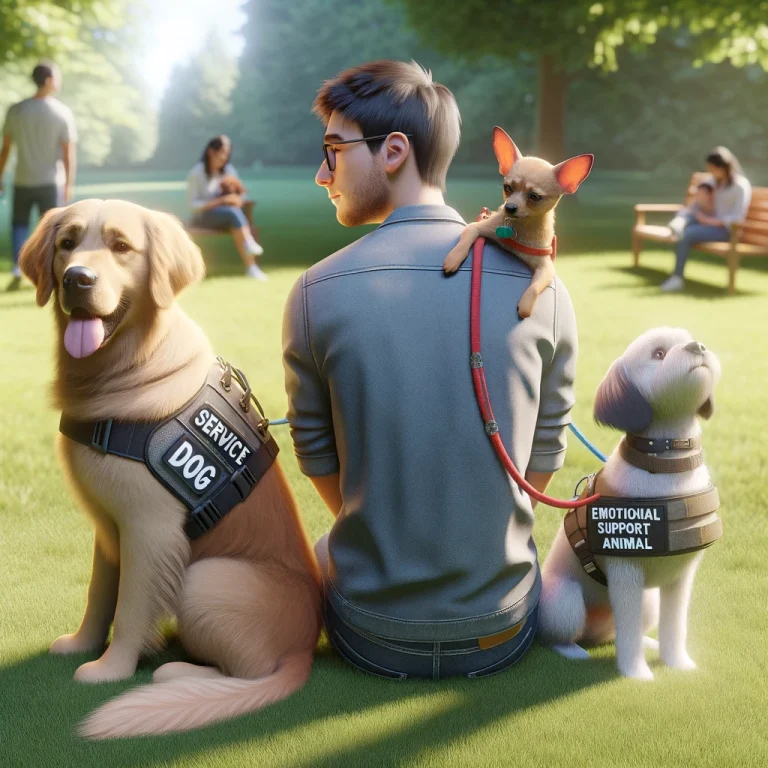Training a service dog is a rewarding but challenging journey. From initial obedience training to mastering specific tasks, there are numerous hurdles to overcome. Understanding common service dog training challenges and learning how to address them can make the process smoother and more successful. This guide will explore ways to overcome training obstacles and provide practical solutions to common training issues.

Understanding Service Dog Training Challenges
Training a service dog involves more than teaching basic commands. It requires patience, consistency, and a deep understanding of canine behavior. Service dogs need to perform tasks reliably in various environments and under different conditions. This complexity can present several service dog training challenges.
The Need for Specialization
Service dogs must be trained to perform specific tasks that assist individuals with disabilities. This specialization requires a level of training that goes beyond basic obedience. For example, a service dog may need to alert a person with hearing impairments to sounds, assist with mobility for someone using a wheelchair, or provide emotional support to someone with PTSD. Each of these tasks requires a different training approach and set of skills.
Emotional and Behavioral Stability
Service dogs must remain calm and focused even in high-stress situations. This emotional stability is crucial for their effectiveness. However, achieving this level of stability can be challenging, especially for dogs that are naturally more reactive or anxious. The training process must address these emotional and behavioral aspects to ensure the dog can perform its duties reliably.
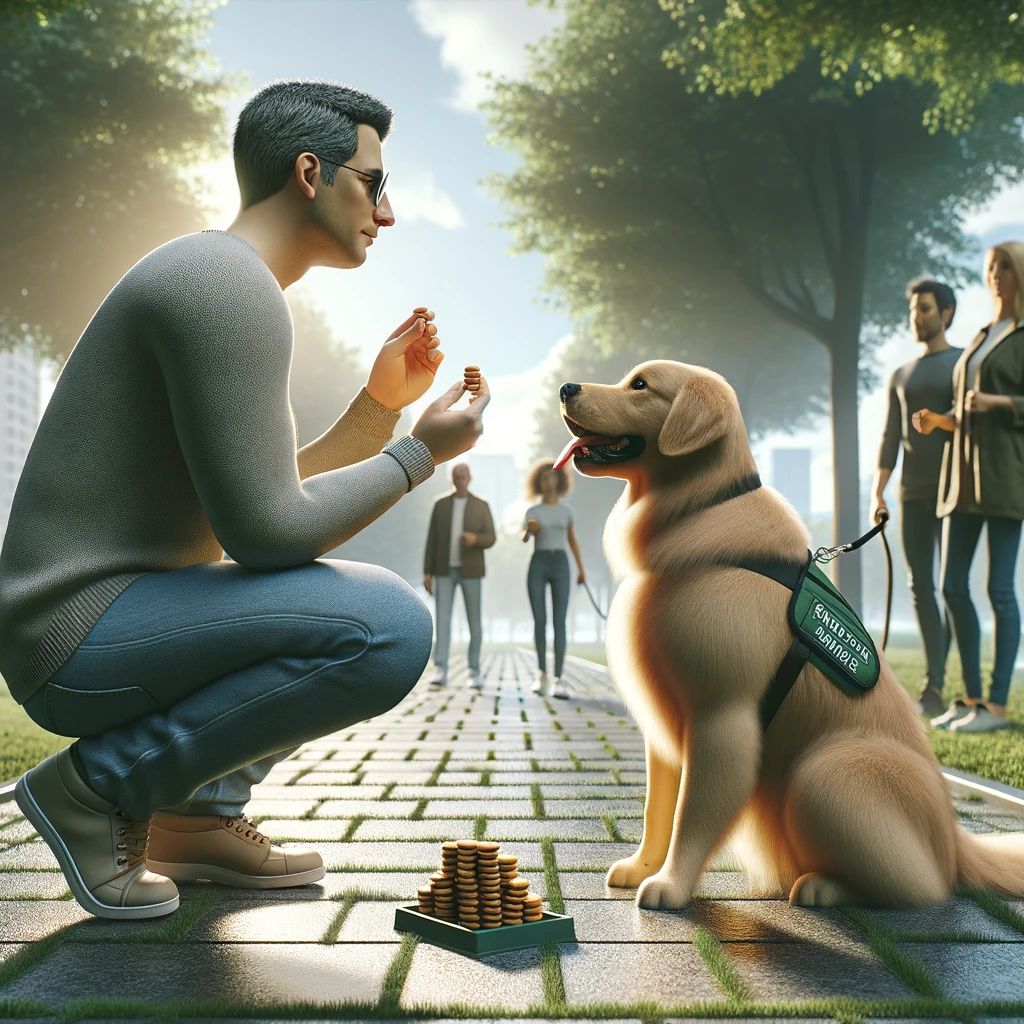
Common Training Issues and How to Overcome Them
1. Distraction Management
Distractions are one of the most common training issues service dog trainers face. Whether it’s other animals, people, or noises, maintaining a dog’s focus is crucial.
Solution: Gradual Exposure and Positive Reinforcement
Start training in a quiet environment and gradually introduce distractions. Use positive reinforcement to reward your dog for staying focused. Consistent practice in different settings will help your dog learn to ignore distractions and stay on task.
Step-by-Step Process:
Start Small: Begin training in a distraction-free environment. This allows your dog to focus solely on you and the commands you are teaching.
Introduce Mild Distractions: Once your dog is comfortable with basic commands, introduce mild distractions, such as a friend walking by or a toy placed nearby.
Increase Complexity: Gradually increase the complexity of the distractions. This could include training in a park with other dogs around or in a busy shopping area.
Positive Reinforcement: Always reward your dog for maintaining focus amidst distractions. Use treats, praise, or playtime as rewards.
Consistency: Practice consistently. The more your dog is exposed to different distractions and learns to stay focused, the better they will perform in real-world situations.
2. Socialization Difficulties
Socialization is critical for service dogs, but it can be challenging. Dogs that are not properly socialized may become anxious or aggressive in unfamiliar situations.
Solution: Controlled Socialization
Introduce your dog to new environments, people, and animals in a controlled manner. Use treats and praise to create positive associations. Regular socialization will help your dog become more comfortable and confident.
Step-by-Step Process:
Early Introduction: Start socialization early. Puppies are more adaptable and can learn to accept new experiences more easily.
Controlled Exposure: Gradually expose your dog to new environments, ensuring each experience is positive. Start with less crowded places and gradually move to busier areas.
Positive Reinforcement: Reward your dog for calm behavior during socialization. Treats and praise can help create positive associations with new experiences.
Regular Interaction: Make socialization a regular part of your dog’s routine. Frequent exposure helps your dog become more adaptable and less anxious in different settings.
Handling Negative Reactions: If your dog shows fear or aggression, calmly remove them from the situation and try again later. Patience and consistency are key to overcoming socialization difficulties.
3. Task-Specific Training Issues
Training a service dog to perform specific tasks can be complex. Tasks like retrieving items, opening doors, or providing deep pressure therapy require precise and consistent training.
Solution: Break Down Tasks
Break down each task into smaller, manageable steps. Use clear, consistent commands and reward your dog for each successful step. Patience and repetition are key to mastering complex tasks.
Step-by-Step Process:
Identify the Task: Clearly define the task you want your service dog to perform. For example, if you need your dog to retrieve items, decide on the specific items and the context in which they should be retrieved.
Break It Down: Divide the task into smaller steps. For retrieving items, the steps might include teaching your dog to pick up the item, bring it to you, and release it on command.
Teach Each Step: Train each step individually, using positive reinforcement. Once your dog masters one step, move on to the next.
Combine Steps: Gradually combine the steps, ensuring your dog understands each part of the task. Practice consistently until your dog can perform the entire task reliably.
Generalize the Task: Practice the task in different environments and under various conditions to ensure your dog can perform it consistently.
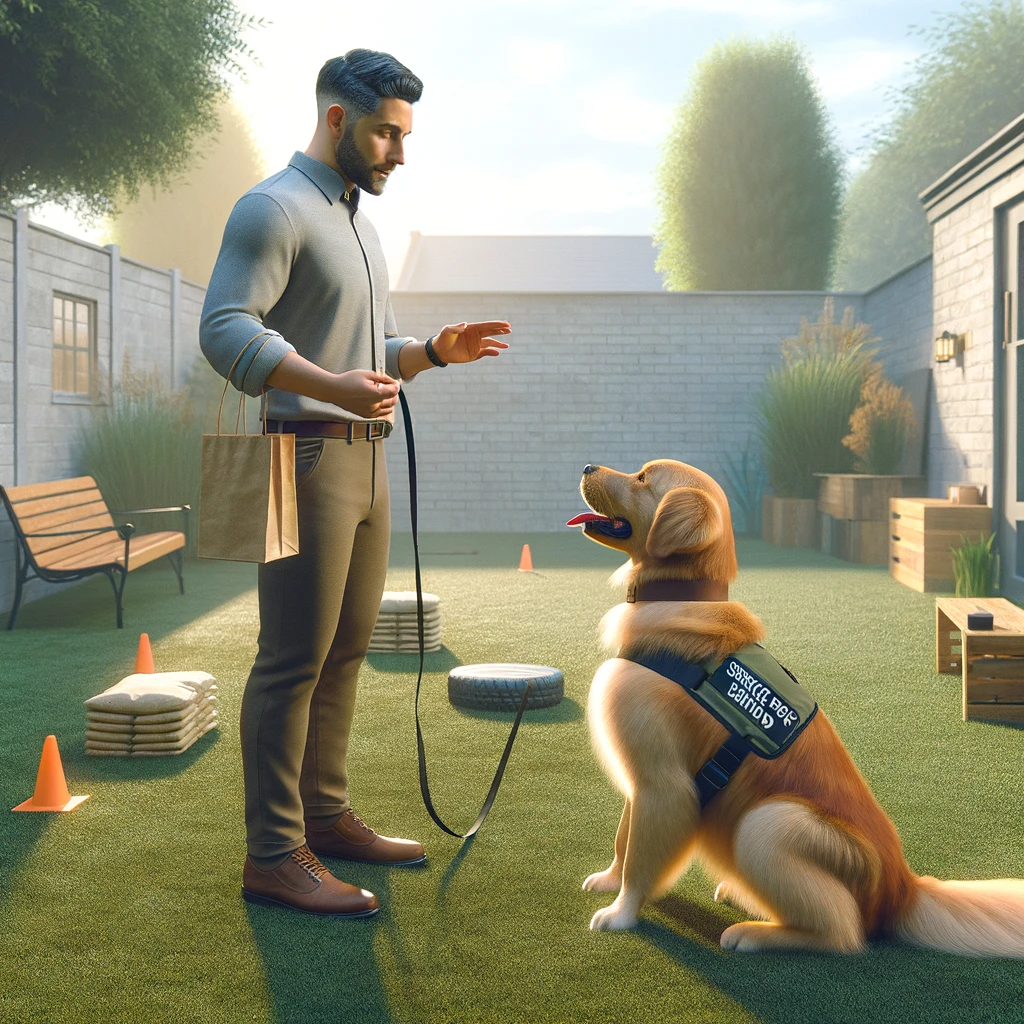
The Importance of Consistency and Patience
Training a service dog takes time and patience. Consistency in commands, rewards, and training schedules is crucial. Dogs learn best through repetition and positive reinforcement. Stay patient and persistent, and celebrate small victories along the way.
Consistency Tips:
Regular Training Sessions: Schedule regular training sessions to reinforce commands and tasks.
Same Commands and Cues: Use the same words and gestures for each command to avoid confusing your dog.
Consistent Rewards: Always reward desired behavior, whether with treats, praise, or playtime.
Patience: Understand that each dog learns at their own pace. Some tasks may take longer to master, and that’s okay.
Utilizing Professional Help
If you encounter significant challenges, seeking professional help can be beneficial. Professional trainers have the experience and knowledge to address complex training issues. They can provide personalized guidance and support to help you and your service dog succeed.
Benefits of Professional Training:
Expertise: Professional trainers understand canine behavior and can provide effective training techniques.
Tailored Training Plans: They can create customized training plans based on your dog’s needs and your requirements.
Behavioral Insights: Trainers can identify and address behavioral issues that may hinder training progress.
Support and Guidance: Ongoing support and feedback from a professional can help you navigate training challenges more effectively.
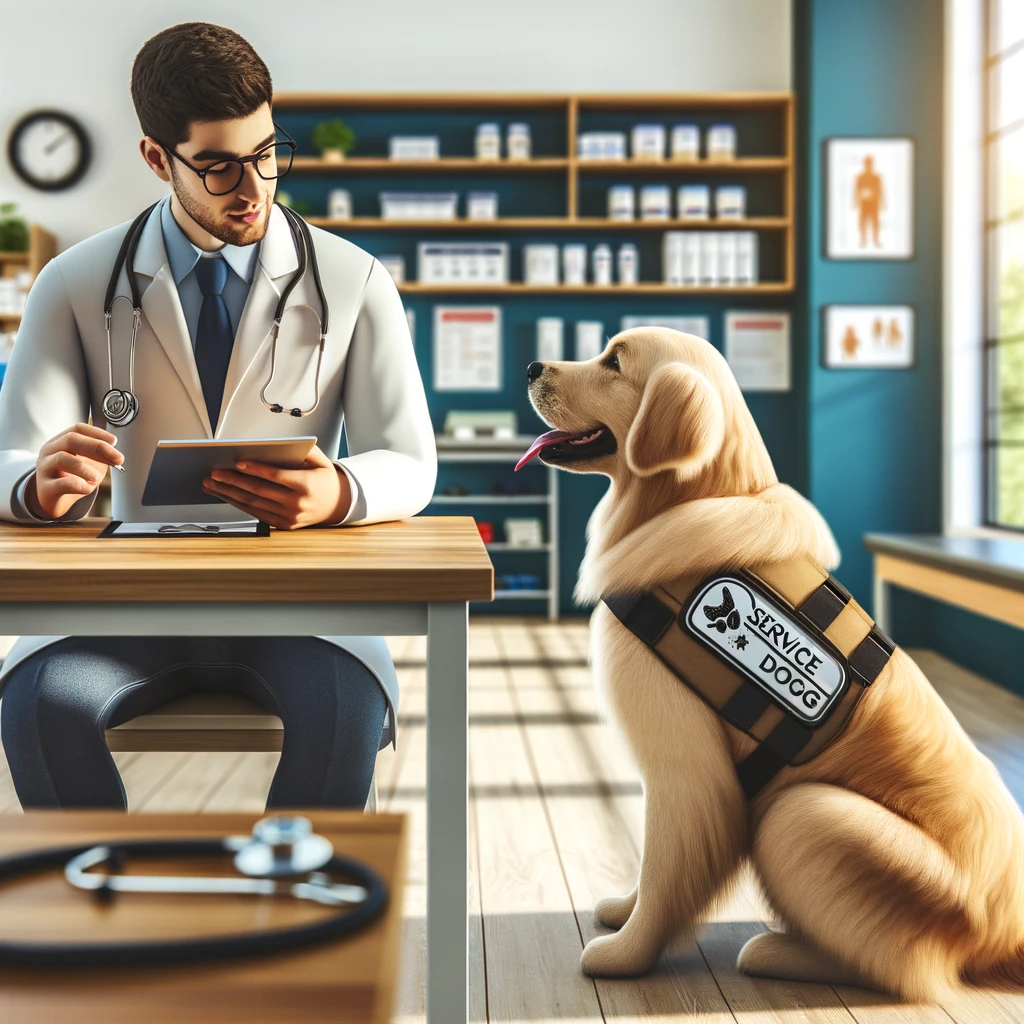
The Role of Pet Insurance and Service Dog Products
Investing in pet insurance and high-quality service dog products is essential. Pet insurance can cover unexpected medical expenses, ensuring your dog receives the best care without financial strain. High-quality products like vests, harnesses, and identification tags enhance your dog’s comfort and effectiveness.
Pet Insurance:
Pet insurance provides financial protection for unexpected medical expenses, ensuring your dog receives the best care without causing financial strain. Look for policies that cover routine care, emergencies, and chronic conditions. Having pet insurance provides peace of mind, knowing that you can afford the necessary treatments and care for your service dog.
Service Dog Products:
High-quality service dog products, such as vests, harnesses, and identification tags, are essential. These products ensure your dog is comfortable, easily identifiable, and well-equipped for their tasks. ServicePupSolutions.com offers a range of products to support your service dog’s training and daily needs. Investing in durable and reliable gear helps your service dog perform their duties effectively and safely.
Self-Training Options
For those interested in training their service dog themselves, resources like ServiceDogOwners.com offer valuable guidance. Self-training allows you to build a strong bond with your dog while tailoring their training to your specific needs.
Benefits of Self-Training:
Personalized Training: Tailor the training to your specific needs and preferences.
Stronger Bond: Building a closer relationship with your dog through direct training.
Cost-Effective: Reducing the costs associated with professional training services.
Flexibility: Training at your own pace and schedule.
Conclusion
Overcoming common service dog training obstacles requires patience, consistency, and a strategic approach. By understanding service dog training challenges and applying practical solutions, you can help your dog become a reliable and effective service companion. Remember, the journey may be challenging, but the reward of a well-trained service dog is invaluable.
For more resources and high-quality service dog products, visit ServicePupSolutions.com. And for those interested in self-training options, explore the comprehensive guides available at ServiceDogOwners.com.
Searching for a way to boost your income while keeping your service dog by your side? Learn how Digital Marketing and Affiliate Marketing can launch your Side Hustle or new career and increase your earnings alongside your loyal companion. Click Here to find out more and start your journey today!

